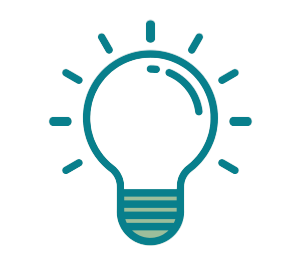Unleash Value, Unlock Growth
Digital Adoption
The rise of digital tools and technologies is an opportunity to transform your business from enduringly profitless to enduringly profitable.
What is digital adoption?
Digital adoption is the process of using digital tools and technologies to improve your business processes, products, services, and customer experience. By doing this, you optimize your business performance and achieve strategic goals. But digital adoption is not just about buying or installing new software or hardware, but about using them effectively and efficiently to create value for your business and your customers.What is a digital adoption plan?
A digital adoption plan examines how information flows through your business today and how it can be improved. It examines two things: what digital tools are you currently using? and how well are you using them? Then it outlines a strategy for how to optimize value creation through effective use of digital tools. It may focus on optimizing the use of digital tools you are already using. Or it could suggest the introduction of a new tool into your business.
A digital plan focuses on three project areas. This is the start of your digital toolbox that you will continue building every year. For example, the three areas could be marketing, operations, and financial reporting.
What we can do for you
What services does a digital advisor provide for the digital adoption plan?
A digital advisor is a professional who helps organizations design and implement a digital adoption plan. Just as a design engineer or architect plans and designs a building or structure, a digital advisor plans and develops a digital roadmap for installing and optimizing the use of digital tools in your business.
A digital adoption plan is a strategy that ensures the effective use of digital tools and platforms to achieve business goals and improve user experience. A digital advisor provides the following services for the digital adoption plan:
- Assessing the current state of digital maturity and identifying the gaps and opportunities for improvement
- Developing a vision and roadmap for digital transformation and aligning it with the organizational objectives and culture
- Selecting and deploying the best-fit digital solutions and platforms that meet the needs and expectations of the users and stakeholders
- Providing training and support to the users and staff to ensure they can use the digital tools and platforms effectively and efficiently
- Measuring and evaluating the impact and outcomes of the digital adoption plan and providing feedback and recommendations for continuous improvement
Our Process

01. Consultation

02. Plan Creation

03. Implementation
Frequently Asked Questions
What is CDAP?
The Canadian Digital Adoption Program (CDAP) is the Canadian government agency administering the Boost Your Business Technology program. CDAP has two primary responsibilities. The first is to certify digital advisors who create digital adoption plans. The second is to review digital adoption plans to determine if they qualify for grant funding.
Who is eligible to apply for the grant?
Any Canadian business with at least $500,000 in annual revenue in 1 of the last 3 years and at least one full-time employee at the time of the application.
How much funding is available through the grant?
The grant funding reimburses 90% of the cost of the digital adoption plan to a maximum reimbursement of $15,000.
How long does it take to receive the grant funding?
Usually, CDAP takes 7-10 days after the digital adoption plan is uploaded through their portal. After reviewing the digital adoption plan for completeness, CDAP direct-deposits the 90% reimbursement amount to your bank account.
What are the measurable results after a digital adoption plan is implemented?
High-quality digital tools are based on extensive scientific research into increasing work productivity. The digital calendar is one example. But it is more important to appreciate that everything a business does is based on information. This means every step can be improved from the first customer contact to the end of the warranty period. And there are countless examples of entirely new industries springing up. These are a few examples of measurable results:
- Increased Efficiency and Productivity: This can lead to decreased labour costs and increased output, resulting in higher productivity & profitability.
- Improved Customer Experience: This can lead to increased customer loyalty, repeat business, and positive reviews, ultimately leading to increased revenue.
- Cost Savings: Task management & scheduling tools can reduce wasted time and improve building materials management, resulting in cost savings.
- Competitive Advantage: In today’s digital age, businesses that are slow to adopt digital solutions risk falling behind their competitors.
What is an example of a digital tool?
A digital calendar is an excellent example. Unlike a traditional calendar, a digital calendar offers powerful features such as scheduling, capacity management, reminders, and accessibility from any device. Digital calendars can be integrated with email and project management software, making all the workflow accessible in one central location, with one-time data entry.
What is a “digital toolbox”?
A digital toolbox is a collection of software tools and resources that can help you perform various tasks. For example, a digital toolbox may include applications for communication, collaboration, productivity, creativity, and learning. A digital toolbox can help you enhance your business productivity, improve your efficiency, and achieve your goals in the digital world.
The best toolboxes combine modularity and cutting-edge technology with timeless craftsmanship to deliver unbeatable performance and durability. Digital adoption is a method of building a digital toolbox that lets you fix the faulty plumbing and wiring in the information flowing through your business. Digital tools, like the digital calendar, are built with a science-based approach dedicated to business improvement with consistent, measurable results. The best digital toolboxes let you get the real work done on time & on budget.
What is the real reason for digital adoption?
The real reason for digital adoption is not just to use technology for its own sake, but to improve the efficiency, effectiveness and customer satisfaction of business processes. Digital adoption means that users are able to leverage the full potential of digital tools and platforms, and integrate them seamlessly into their workflows. Digital adoption also enables businesses to adapt to changing customer needs, market trends and competitive pressures, and to innovate faster and better. By adopting digital solutions, businesses can achieve higher productivity, lower costs, better quality and more value for their customers.
In the next few years, artificial intelligence apps like ChatGPT will completely change how business is done. Digital adoption allows a small business to handle a much higher growth rate with a better margin. Digital tools provide a proven scientific method for scaling quickly and effectively.
What are the first steps in the application process for the grant?
Contact us for your free digital readiness assessment, and we will explain the whole process. The second step is to sign-up with the CDAP online portal. Having an advisor present while you sign up is a good idea to ensure everything runs smoothly.
How much time and effort is required from the business owner?
We have designed the digital adoption process to be smooth and easy. This work is primarily based on a couple of easy-to-complete questionnaires and the two crucial meetings:
DIGITAL SWOT
Our first meeting is for a Digital SWOT analysis. This is a free, no-obligation meeting designed for you to get to know us for us to understand your business. If you proceed, the second major meeting is the:
DIGITAL VISION
The half-day Digital Vision meeting is the heart of the Digital Adoption Plan process. This is a fast-paced, exciting meeting to develop a vision of your digital future. Your role is to tell us where you are now and where you want to be. Our role is like an architect; we research, ask questions, listen, and design the plan. And in the next phase we can help you to implement the plan.


